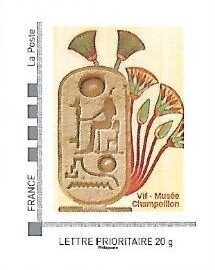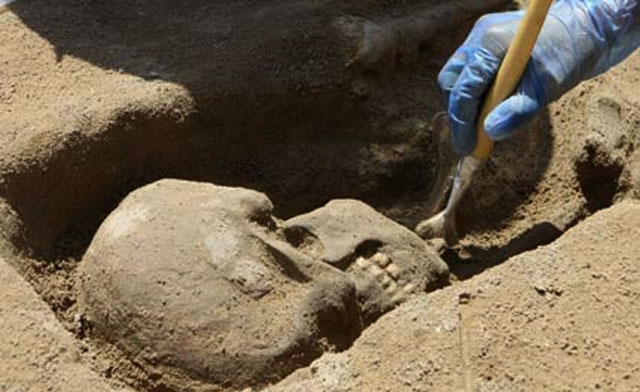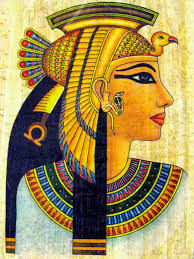Souvenir Sheet: Cartouche of Rameses II, Abu Simbel, Egypt (Personalized and Private Mail Stamps 2021)
Cartouche of Rameses II, Abu Simbel, Egypt (Personalized and Private Mail Stamps 2021)
01 January (Personalized and Private Mail Stamps ) within release France : Collector. Champollion Museum, Vif goes into circulation Souvenir Sheet Cartouche of Rameses II, Abu Simbel, Egypt face value Prioritaire No Face Value
| Souvenir Sheet Cartouche of Rameses II, Abu Simbel, Egypt in catalogues | |
|---|---|
| Colnect codes: | Col: FR-MON 2021-151/2 |
Souvenir Sheet is square format.
Also in the issue France : Collector. Champollion Museum, Vif:
- Souvenir Sheet - Cartouche of Rameses II, Abu Simbel, Egypt face value Prioritaire;
- Souvenir Sheet - Champollion Museum, Vif face value 4*Prioritaire;
- Souvenir Sheet - Painting of Jean Francois Champollion by Madame de Rumilly face value Prioritaire;
Souvenir Sheet Cartouche of Rameses II, Abu Simbel, Egypt it reflects the thematic directions:
Archaeology or archeology is the study of human activity through the recovery and analysis of material culture. The archaeological record consists of artifacts, architecture, biofacts or ecofacts, sites, and cultural landscapes. Archaeology can be considered both a social science and a branch of the humanities. It is usually considered an independent academic discipline, but may also be classified as part of anthropology (in North America – the four-field approach), history or geography
Archaeology or archeology[a] is the study of human activity through the recovery and analysis of material culture. The archaeological record consists of artifacts, architecture, biofacts or ecofacts, sites, and cultural landscapes. Archaeology can be considered both a social science and a branch of the humanities. It is usually considered an independent academic discipline, but may also be classified as part of anthropology (in North America – the four-field approach), history or geography
A museum (/mjuːˈziːəm/ mew-ZEE-əm) is an institution dedicated to displaying and/or preserving culturally or scientifically significant objects. Many museums have exhibitions of these objects on public display, and some have private collections that are used by researchers and specialists. Compared to a library, a museum hosts a much wider range of objects and usually focus around a specific theme such as the arts, science, natural history, local history, and other topics. Public museums that host exhibitions and interactive demonstrations are often considered to be tourist attractions, and many museums attract large numbers of visitors from outside their host country, with the most visited museums in the world regularly attracting millions of visitors annually.
Pharaoh (/ˈfɛəroʊ/, US also /ˈfeɪ.roʊ/; Egyptian: pr ꜥꜣ; Coptic: ⲡⲣ̄ⲣⲟ, romanized: Pǝrro; Biblical Hebrew: פַּרְעֹה Parʿō) is the vernacular term often used for the monarchs of ancient Egypt, who ruled from the First Dynasty (c. 3150 BCE) until the annexation of Egypt by the Roman Republic in 30 BCE. However, regardless of gender, "king" was the term used most frequently by the ancient Egyptians for their monarchs through the middle of the Eighteenth Dynasty during the New Kingdom. The earliest confirmed instances of "pharaoh" used contemporaneously for a ruler were a letter to Akhenaten (reigned c. 1353–1336 BCE) or an inscription possibly referring to Thutmose III (c. 1479–1425 BCE).




